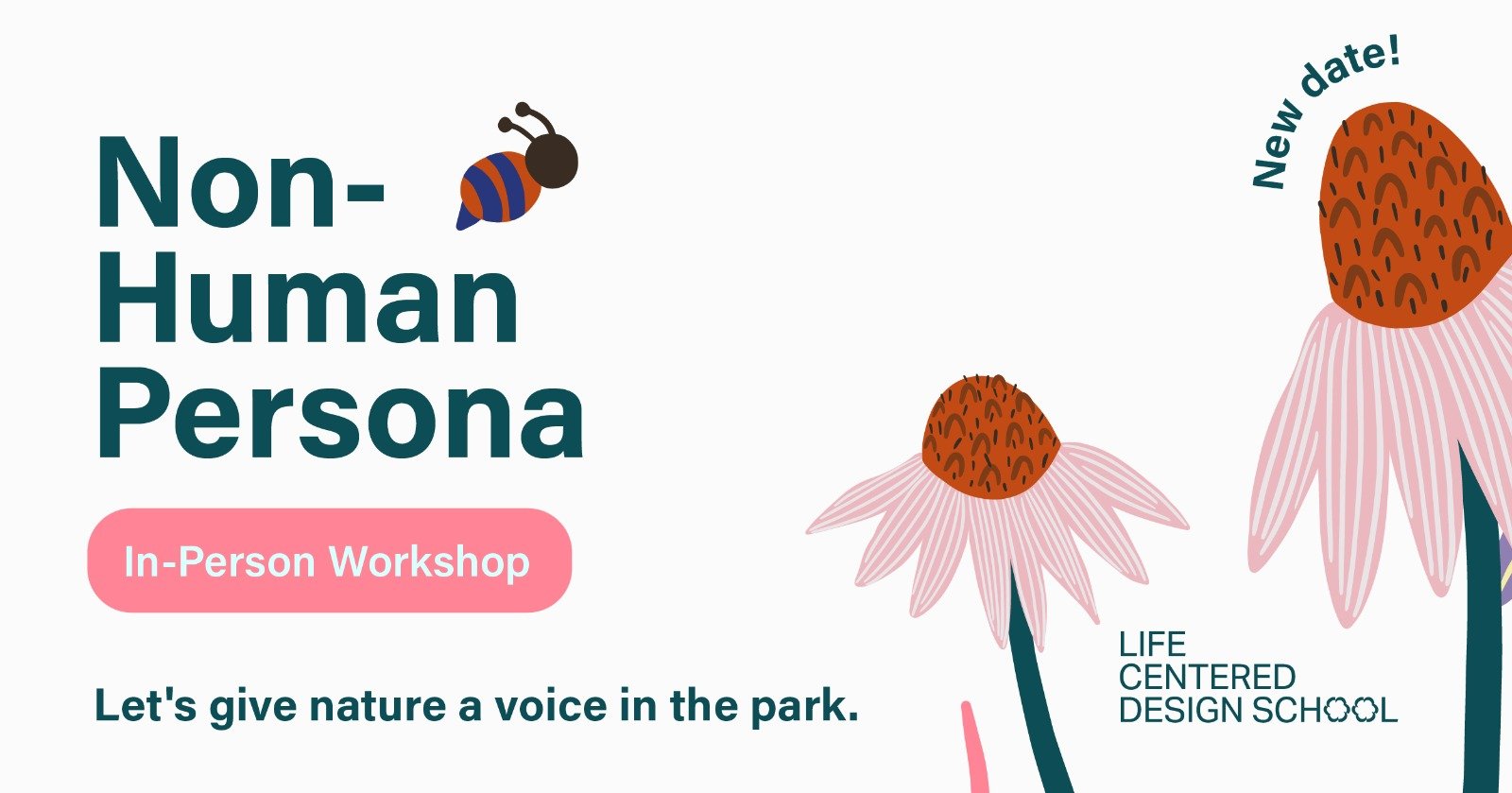LCD Weekly Issue - 020 -Can Design Thinking be Sustainable?
🏔️ Words from the mountains
Over the past years, design thinking has experienced a challenging ride. Few articles mentioned its death, while others blamed it for being a linear corporate planning process. But what if we can add more life to design thinking? What if we can, through life-centred design principles, make it more holistic and sustainable (but for real, not just for the hype of it.)
We developed our Life-Centered Design framework to understand what needs to happen in research and design when we want to answer a design question in a life-centered way. It is the ideal situation!
I am fully aware that organisations, especially the bigger ones, will not replace their design approach with a new life-centred design process all at once. That is a bridge too far. But how can design and innovation teams adapt their existing design processes to become more life-centred and sustainable? If you want to push the boundaries, how can you make your design process regenerative?
We created a scheme of what you could do before and during the design process.
Before
Involve the sustainability department/ team in your design projects. They know ESG goals and the organisation's legal requirements for sustainability reporting.
Create a reading list about life-centered design, regeneration, ethical design, climate change, social justice, etc. Read about the benefits of Sustainability for your organisation.
Research data and stories about climate change, colonialism, and social justice issues globally and in your field of work.
During
Add the nature and societal perspective to your project's design research. Most designers are familiar with user personas. You can start by adding a Non-human persona of a species, habitat, or ecosystem impacted by your products or services. You can do the same with a non-user, a member of an invisible community impacted by your actions. These new perspectives help you to create more sustainable designs.
Take your team outside and explore nature in the city or outdoors. Looking at nature through a design lens helps us understand our impact as humans.
Create a sustainability manifesto involving not only your design team and sales, marketing, HR, manufacturing, etc. It might be challenging to make, but it is valuable to try.
Ideate and design with your newly created planetary and societal voices in mind. If you, for example, create a customer journey map, you can add a row/section for nature and societal impact.
Transparency is key. Be open about what you are doing and why you are doing it.
Bonus tip.
Hire designers passionate about climate change and social justice, allow them to share their knowledge and skills, and give them space to shine.
You can take these steps to start implementing some of the life-centered design principles in your design (thinking) process. Remember, it is not about perfection but about action and starting the conversation within your design or innovation team, your organisation and your community.
🐅 LCD in the Wild - Indigenizing Design Framework
Catapult Design was one of the early design agencies breaking boundaries with human-centered design in the social and development domain. I had the pleasure to visit Co-Founder Heather Flemming back in 2013 in San Fransisco. Recently, they defined the Indigenizing Design Framework, below they describe why they did this,
“ Despite the holistic focus on understanding lived experiences, Human Centered Design does have some limitations, and ‘Design’ as an industry and vocation is rooted in Western epistemologies and approaches that may not be appropriate or effective for Indigenous contexts (Why Can’t the U.S. Decolonize Its Design Education?). Often, Indigenous communities and their values, culture, and teachings are watered down and overlooked, leading to inequities and a loss of self-identity. Additionally, traditional design approaches forget to incorporate environmental or non-human factors into the design process. In contrast, Indigenous cultures have long-standing relationships with the land, promoting ecological balance and practising their sovereignty.
By centering Indigenous perspectives and rethinking the traditional design processes, we hope to address these limitations and create a more inclusive and effective design process. With this new Indigenizing Design Framework, we hope to enable solutions that prioritize social and economic equality and place-based environmental stewardship and care. “ - words by Catapult Design -
🪄 Inspiration- Breathing with the Forest
Breathing with the Forest is an experience of deep continuity and reciprocity with a Capinuri tree (Maquira coriacea) in the Colombian Amazon rainforest. Inviting us to see inside its hidden pathways, this multimedia journey brings us into a relationship with the rhythmic interchange of breath that keeps the forest—and us—alive. Entering the forest, we escape our separateness to embody something more than human.
Breathing with the Forest is a publication of Emergence Magazine an award-winning magazine and creative production studio that explores the threads connecting ecology, culture, and spirituality.
🔥 Hot in the School - Non-Human Persona Workshop Live! (in person, real life, no screens jaja)
Join us in Westerpark, Amsterdam, on June 6 for an afternoon of nature, design and Non-Human Personas!
During this active, imaginative, and immersive activity, you will start by giving nature a voice in the park by creating a Non-Human Persona. Then, we will collectively design a small prototype, a creation that will inspire park-goers to connect with nature and embrace sustainable actions.
Rest assured, we will provide all the necessary workshop materials. All you need to bring is your imagination!
As a family designer family, feel free to bring your kids or babies. Nature is fun for everyone!
———-
Until next Monday!
Have a great week!
👋 Jeroen




